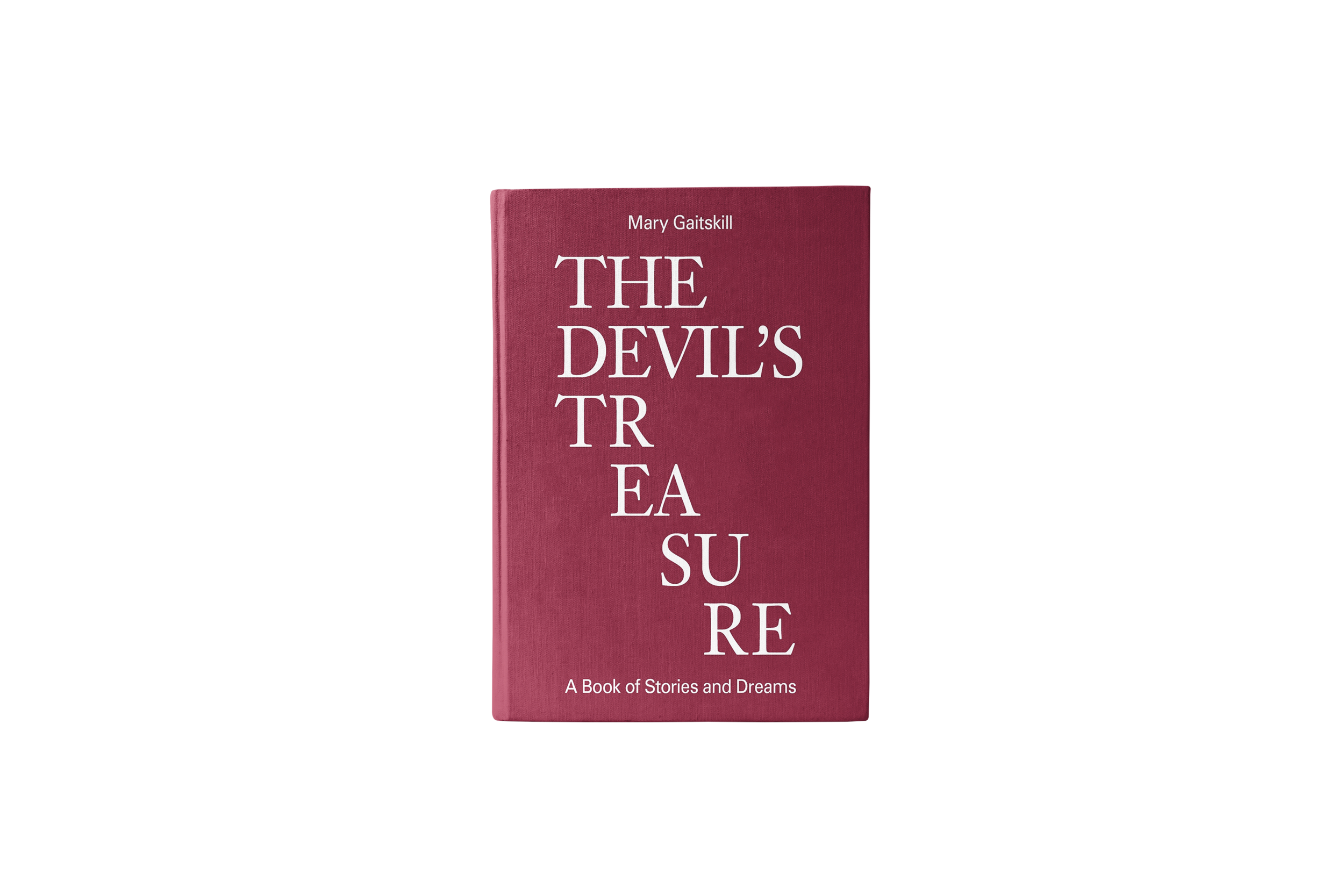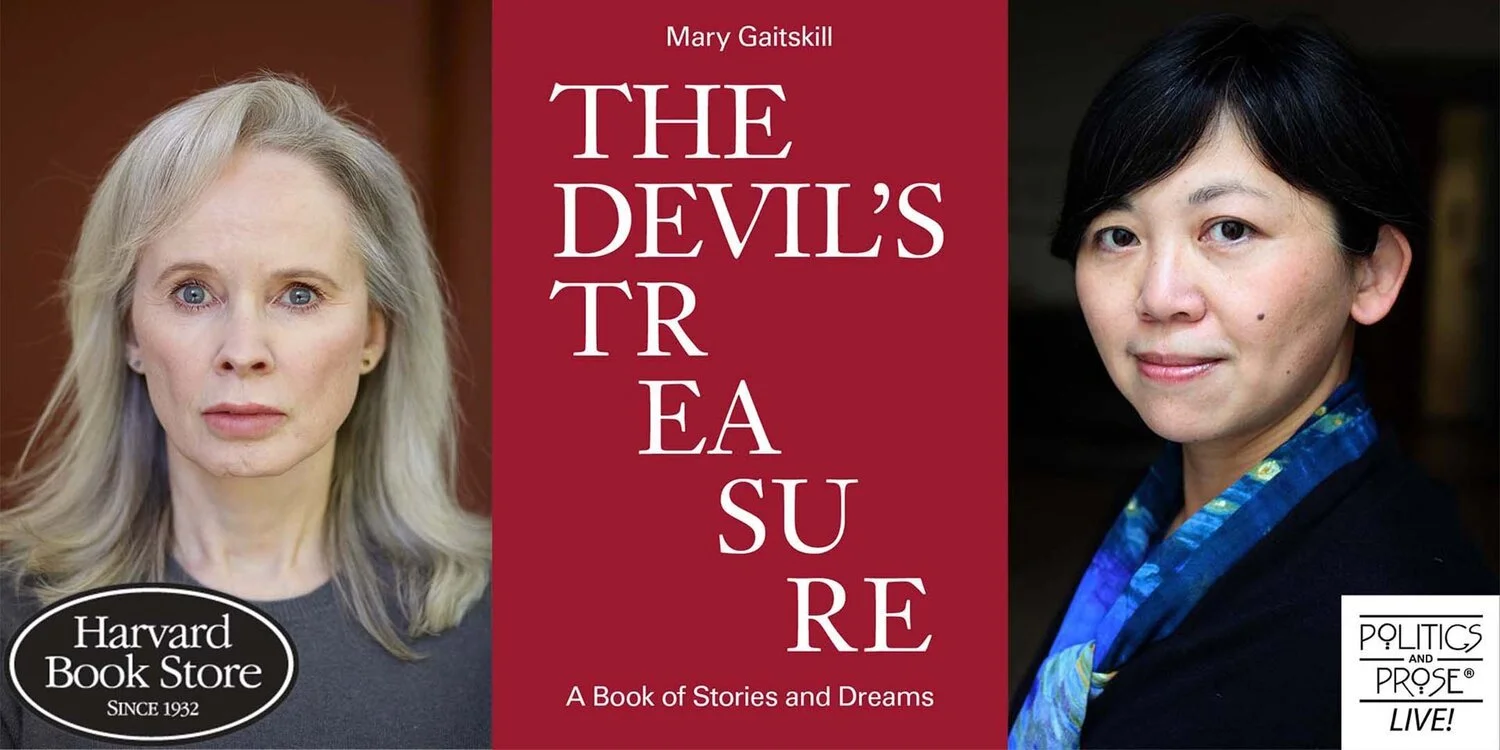The Devil's Treasure: A Book of Stories and Dreams - Mary Gaitskill
The Devil's Treasure: A Book of Stories and Dreams - Mary Gaitskill
A bewitching collage of fiction, memoir, essay, criticism, and visual art from an author unique in her “ability to evoke the hidden life, the life unseen, the life we don’t even know we are living.” (Parul Sehgal, New York Times Magazine)
US Release: Oct 19, 2021 • UK Release: Apr 10, 2023
Hardcover ISBN: 9781733540155 • 240 pages
About the Book
In The Devil's Treasure—aptly subtitled A Book of Stories and Dreams—the iconic author Mary Gaitskill has created a chimerical hybrid of fiction, memoir, essay, criticism, and visual art that transcends categorization. This collage of four novels (one a work in progress), interspersed and thematically linked by a single short story, then woven together with the author's commentary, is a kind of director's cut revealing the personal and societal forces that went into each individual piece of work, an ongoing, passionate exploration of core human emotions and experience—the ideally, sometimes quixotically high, and the grossly, confusedly low.
With the stylistic daring and preternatural acuity that has made her one of America's most original writers, Gaitskill has created a layered vision of modern life that simultaneously blends the huge prehistoric creatures that swim at the bottom of our collective ocean with the family that picnics on the beach while the podcast natters about politics and a perhaps dangerously curious child explores the lapping waves.
Praise for The Devil’s Treasure
“This superb book is for more than just super fans. Gaitskill speaks about the opposition inside us, the doubleness of human nature, and a longing for unity.”
—Michael Silverblatt, KCRW Bookworm
“Gaitskill’s unusual new project creates a collage out of her previous works, connected by the thread of a new short story. At the age of 7, Ginger goes to hell to steal the Devil’s treasure... Ginger steals the sack of treasure only to discover that now she can never put it down; that the treasure has become a part of her; that it is something she needs but does not want and that the truth it speaks is about love and pain and how they will not be separated in this life or the one beyond... The manuscript is color-coded in tones of orange and red which fluctuate page by page (orange for excerpted work; red for Ginger’s story and literary commentary by the author). This creates a flickering effect evocative of the setting Ginger wanders through, an effect reinforced by Gaitskill’s original collages that recall the images hung on hell’s walls... The book rewards those looking for a deeper connection to Gaitskill's rigorous imagination.
“This is Gaitskill’s gift: showing the curiosity that cathartically persists at the abyss—of violence, of humiliation, of separation. That is, the interest in experience extant even in trauma… Strange and shifting, The Devil’s Treasure … [moves] toward the frisson of the fiction/nonfiction border... Gaitskill’s legendary style is narcotic, her fictions hallucinatory, as the real often is. Her clarion sentences of constellated imagery drop you into that ‘deep, soft core that everyone longs for, too deep for games or even words’… The book’s fictive-critical hybridity is a call-and-response with the self: passages from novels are answered by elucidations of the origins of their writing.”
—Quinn Latimer, 4Columns
“The medium of collage emerged to challenge the difference between the real and the artificial. Similarly, The Devil’s Treasure draws attention to the line—increasingly blurred—between fiction and nonfiction… Gaitskill, too, likes to peer into Hell, always with the utmost empathy. ‘I knew people were horrible,’ she writes in her essay on the Book of Revelation, ‘but even in my youth I could also see that most people did the best they could.’”
—Mia Levitin, Times Literary Supplement
Praise for Mary Gaitskill
“Gaitskill has produced a body of work so acutely observant of human behavior that it’s frequently described in the language of violation: a vivisection, a dental drill, a flogging... But the real danger is elsewhere: It’s in glances and gestures and sudden silences, in craving contact and being rebuffed... Gaitskill isn’t scary because she conjures monsters; monsters, she points out, are almost always in fashion. What makes her scary, and what makes her exciting, is her ability to evoke the hidden life, the life unseen, the life we don’t even know we are living.”
—Parul Sehgal, The New York Times Magazine
“What is most amazing about Gaitskill is her ability to portray the heart of human longing and suffering, and to see in each gesture of our lives the disturbing and conflicting pool of drives that marks our every gesture.”
—Sheila Heti, The Believer
“Gaitskill is something special. She doesn’t grandstand; she lacks self-pity. She has an intuitive sympathy for people acting on their worst impulses and a gift for portraying cruelty without condemnation. She manages to be an erotic writer without being, precisely, a sex writer.”
—Emily Nussbaum, New York Magazine
“About sex she is an especially distinctive writer. She catches cruelty and inexplicable desire, what she has called ‘the dirt within,’ as well as any writer we have. Once you’ve read her, her little hammer continues to tap in your head.”
—Dwight Garner, The New York Times
"Bracing in its rigorous truth-seeking, subtle and capacious in its moral vision, Gaitskill's work feels more real than real life and reading her leads to a place that feels like a sacred space."
—Priscilla Gilman, The Boston Globe
About the Author
Mary Gaitskill is the author of Bad Behavior, Two Girls, Fat and Thin, Because They Wanted To, Veronica, Don't Cry, The Mare, Somebody with a Little Hammer, and This Is Pleasure. Her work has appeared in the New Yorker, Harper’s, Esquire, Best American Short Stories, and The O. Henry Prize Stories.




